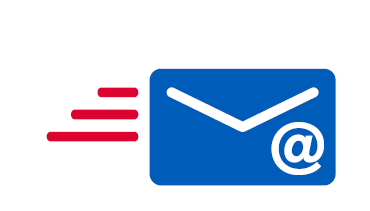- Products

Enjoy a free 30-day trial of our
data validation software.Experience the power of trusted data
solutions today, no credit card required! - Solutions

Enjoy a free 30-day trial of our
data validation software.Experience the power of trusted data
solutions today, no credit card required! - Partners

Enjoy a free 30-day trial of our
data validation software.Experience the power of trusted data
solutions today, no credit card required! - Learn more
- Pricing
- Contact Us
Email database facelift: Getting your management practices right to ensure meaningful results

A majority of companies today are using email as a key channel in their marketing practices. Most marketers are always looking for new trends or best practices to improve email content and delivery, all to increase consumer engagement with messages. While those are worthwhile efforts, new Experian Data Quality research finds that many of us are falling short on the basic concept of email database maintenance.
The quality of an email database can have a dramatic impact on message delivery and consumer engagement. If too many email addresses are inaccurate or collected in a poor manner, messages may be delivered during off times, sent to the spam folder, or they may not be delivered at all.
According to the new report, the challenge is great. On average, respondents think 20 percent of their email database is inaccurate and about a third of respondents have no idea about the level of inaccuracy.
The high degree of inaccuracy is resulting in unnecessary challenges for marketers. Seventy-three percent of companies say they have experienced email deliverability issues in the last 12 months. These have resulted in an inability to communicate with their subscribers, poor customer service and even regulatory issues. This is not ideal when some of the biggest challenges companies are facing relate to growing customer expectations.
Organizations need to make changes to their email database practices to reduce the level of errors. The bulk of issues are caused by human error. That could be individuals collecting email addresses inaccurately or customers mistyping details.
The good news is there are relatively easy fixes that organizations can make in order to alleviate email database issues. There are three key tips that I recommend to get started:
- Stop purchasing email lists – Twenty-four percent of the individuals surveyed acquire email addresses through purchased lists. Purchased email lists are full of inaccuracies, spam traps and honeypots. Sending to them can cause deliverability issues for an entire organizational domain, not just for those bad emails. Companies should be acquiring email addresses through opt-in methods to ensure the consumer actually wants to receive messages, ensuring that the email address is valid and resulting in fewer spam complaints.
- Validate email addresses at the point of capture – While the majority of companies do validate new email addresses, there are still 45 percent of companies who do not. In addition, the validation happens at different times and there is little consistency. Some do daily batch processing, others monthly, some companies say validation is an event that is dependent upon the channel the email address is collected through. To alleviate human error, organizations should validate email addresses upon entry.
- Remove any hard bounces from your email list – Only 41 percent of companies say they are removing hard bounces today. A hard bounce is an email address that is not good; you won’t reach it later on. Remove those from your list and set-up a trigger to request a new email address from the consumer when you engage with them next. Keeping hard bounces in your email database will cause irreparable harm to your sender reputation, so removing these email addresses is critical.
Companies are going to continue to use email as a popular channel for communication for the foreseeable future. However, they do need to take care of basic email database maintenance in order to maximize extensive efforts around email.
For more information on email marketing best practices, check out our latest research study: The 2015 Email Data Quality Report.

